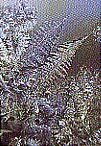Order or Chaos?
Originally published in Creation 20, no 3 (June 1998): 46-48.
'Chaos' ordinarily describes any kind of disorder or confusion. In this case, what appeared to be chaos, on closer examination is another layer of more complex order in this universe God created.
Does chaos glorify God? Don’t worry, I’m not referring to your linen closet or a typical Sunday morning at your house. The chaos I’m talking about is a new area of scientific study termed ‘chaos theory.’
Scientific thought took a new turn when Newton discovered that the laws which account for a falling apple and those that describe the moon’s orbiting the earth were one and the same. Ever since he discovered and formulated the laws that govern motion in our universe, scientists have assumed that the universe runs like a clock, explained by a few simple laws. Scientists described what seemed like complicated systems in terms of comparatively simple equations. They thought that they could look at the world, figure out how it works, write an equation to describe it, then plug in any numbers and be able to predict any outcome. Some scientists have thought that they would eventually discover how to describe everything in the universe in simple, mathematical terms. Some have even thought they would find one set of equations that describes how the entire universe formed and operates—a ‘theory of everything.’
But even as scientists figure out equations for more and more of the universe’s systems, they are continually baffled by unexplained phenomena and systems that seem to act against the laws they have set forth to explain these actions. Wobbles in the orbits of planets, turbulence in the airflow patterns of a plane’s wing, the changing size of animal populations—every once in a while these systems and others fail to conform to the simple equations scientists have worked out for them.
They realized that these systems that seemed to be so disordered were actually following strange and intricate patterns.
These unexplained phenomena have aroused the curiosity of the scientific community. Scientists are finding chaos where they thought they would find order. But then, looking more closely, they are finding unexplained order in what looked like chaos. With the development of faster, more powerful computers, they have been able to test equations they have been relying on for years. They have found that, under certain conditions, some of these equations produce ‘chaotic’ results. Then they realized that these systems that seemed to be so disordered were actually following strange and intricate patterns.
When Edward Lorenz, a meteorologist, programmed a model of the weather into a computer, he got strange results. Lorenz found that minute differences in initial weather conditions produced drastic changes in the outcome. Meteorologists had long suspected this was so. In fact, they had given the idea a name—‘the butterfly effect.’ The name was based on ‘the half-whimsical belief that a butterfly flapping its wings in Asia could affect the weather in New York a few days or weeks later.’1

Plants show similar repetitive structures in, for example, the veins on a leaf or a tree's branching limbs.
Photo by Tom Wagner
When Lorenz created equations to describe these differences and fed these equations into a computer which graphed the results, he found that these ‘chaotic’ equations produced evidence of an unusual kind of predictability. The line of the graph produced a twisted figure-eight—a multi-dimensional butterfly shape. But the strange part is that although the line always described essentially the same shape over and over again, it never described exactly the same shape and no point on the graph ever intersected any other point. Since Lorenz’s discovery, scientists have found many other of these ‘strange attractors’, as the phenomena are now called.
Put simply, the equations repeatedly describe the same general shape but never repeat themselves precisely. Other chaotic equations form complex branching patterns that duplicate themselves repeatedly, but on a diminishing scale—each branching pattern a replica of the last but much smaller, just as we see in the structure of many plants (see photo, right).
 Photo by Tom Wagner |
 Photo by Stewart Lawson |
 Photo by Tom Wagner |
Branching structures, all with clearly visible patterns of self-similarity, can be found all around us…and even in us. Look at the photographs (above). A tree’s main limbs branch out in all directions and they in turn have smaller branches, which have twigs, again branching off into smaller shoots…all different, yet similar. It’s interesting also to observe the way dried out mud cracks into (other) patterns which, though different, show the same concept of self-similarity on every scale. Also, ice crystal formation; the branches in a river tributary system observed from space; the intricate branching of the airways in our lungs; and the branching patterns of an electrical discharge. There are many other examples showing the same sort of ‘fractal’ patterns, as they are called.
All chaotic systems seem to have an unusual sensitivity to initial conditions. They are systems in which seemingly inconsequential changes turn into major differences in outcome. Scientists have found evidence of ‘chaos’ in astronomy, epidemiology, meteorology, air turbulence, the stock market, and the human body. It is in the study of the human body that some scientists are beginning to realize just how important chaos is. Ary Goldberger of Harvard Medical School believes he has discovered not only that the rhythm of the human heart is chaotic, but that chaos in the heart is necessary. When he compared the variations in the heartbeats of a healthy person to those of one suffering from heart disease, the healthy heartbeat was actually the more chaotic.2
This has opened some scientists’ eyes to the possibility that chaotic behaviour may not be an abnormality, but a characteristic essential to the design of some systems.
When we consider the exquisitely complicated patterns found in chaotic systems, it appears the theory was misnamed. ‘Chaos’ ordinarily describes any kind of disorder or confusion. In this case, what appeared to be chaos, on closer examination is another layer of more complex order in this universe God created. Scientists use the word ‘chaos’ to indicate simple things that behave in complicated and unexpected ways—things that surprise us and confound our ability to predict how they will behave in the future. Some are coming up with different names for this phenomenon as they learn more about it: ‘complexification’ and ‘the science of surprise.’
‘Traditionally, experts have blamed these surprises on outside influences or imperfect data . . . But now scientists, studying the world around us with the aid of powerful computers, are beginning to realize that surprise is inevitable. Systems such as the weather … have surprise built into them. They will always behave in unexpected ways, no matter how well we understand them. It is in their nature to do things we can’t predict.’3
Still, scientists are hoping these new equations could provide a method of predicting future behaviour of systems more accurately than at present. And many years from now, when we think we have these new laws of our complex world all worked out, no doubt we’ll discover another set of phenomena that defy our statements of natural law.
The wise scientist realizes that the all-knowing, all-powerful Creator would create a universe that will take the lifetime of humanity and longer to understand fully. In that way the creation reveals the nature of the Creator (Romans 1:20).
‘It is the glory of God to conceal a thing: but the honour of kings is to search out a matter’ (Proverbs 25:2, KJV).
Chaos theory: no help for evolution
Occasionally it is claimed that the discovery of patterns of order in seeming chaos is a bright star of hope for evolutionists. They feel it holds promise for their struggle to explain how disordered chemicals could have assembled themselves into the first self-reproducing machine, in opposition to the relentless tendency to universal disorder.
However, present indications point to this being an illusory hope. One of the classic examples of such ‘order out of chaos’ is the appearance of hexagonal patterns on the surface of certain oils as they are being heated. The minute the heating stops, this pattern vanishes once again into a sea of molecular disorder.
These patterns, like the swirls of a hurricane, are not only fleetingly short-lived, but are simple, repetitive structures which require negligible information to describe them. The information they do contain is intrinsic to the physics and chemistry of the matter involved, not requiring any extra ‘programming.’
Living things, on the other hand, are characterized by truly complex, information-bearing structures, whose properties are not intrinsic to the physics and chemistry of the substances of which they are constructed; they require the pre-programmed machinery of the cell.
This programming has been passed on from the parent organisms, but had to arise from an intelligent mind originally, since natural processes do not write programs.
Any suggestion that the two issues are truly analogous denies reality.
Footnotes
- Christopher Lampton, Science of Chaos: Complexity in the Natural World, Franklin Watts, New York, p. 68, 1992.
- Ref. 1, p. 78.
- Ref. 1, p. 13.
Recommended Resources

Answers in Genesis is an apologetics ministry, dedicated to helping Christians defend their faith and proclaim the good news of Jesus Christ.
- Customer Service 800.778.3390
- © 2024 Answers in Genesis





